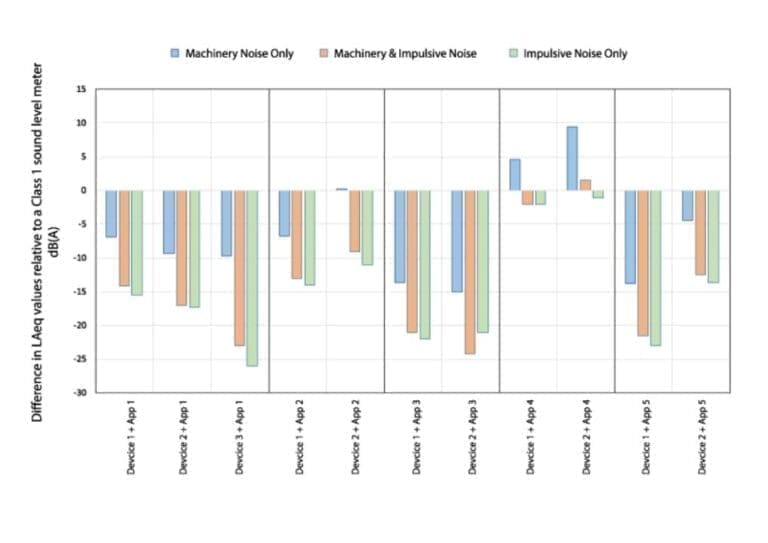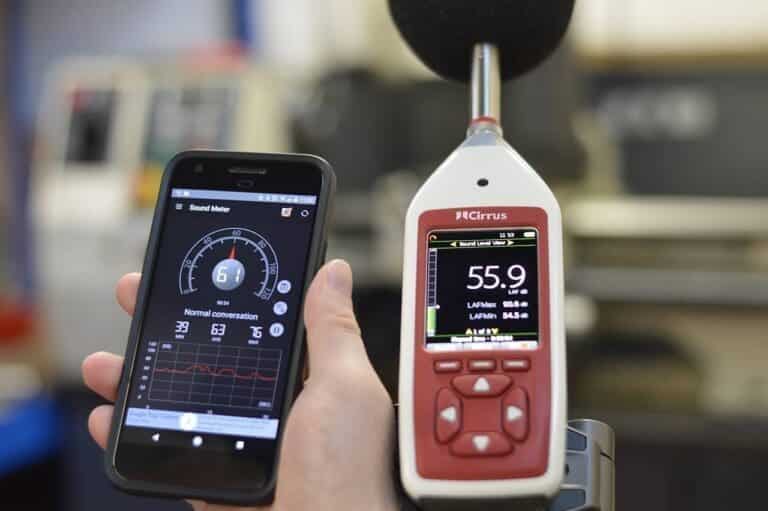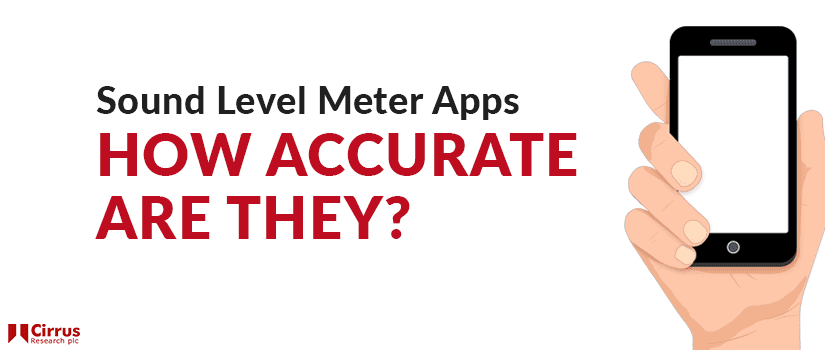There has been a growing awareness of the availability and application of sound level meter apps providing noise measurement functions.
Some of these sound level meter apps have been designed to meet compliance with the relevant instrumentation standards when used with a suitable external microphone. The vast majority of these are available as free downloads from the Google Play Store or the Apple App Store.
But, if combined with the range of devices available, there is potential for significant variations in the accuracy, function and performance of the measurement chain. So, can convenience or cost efficiency ever override accuracy when it comes to noise measurements?
How Widely Used are Sound Level Meter Apps?
A significant portion of the noise measurement equipment sold in the UK and overseas is used for compliance with regulations such as the Control of Noise at Work (2005).
We carried out our own brief survey among our customers, asking them the question “Are you or have you used a sound level meter app for work purposes?”
40%
Noise at Work
17%
Environmental
Within Noise at Work, users often used sound level meter apps as a way of making an initial assessment of noise levels or to give other stakeholders a simple way to raise concerns about noise levels.
Environmental users were looking for levels and sound recording of concern to them, or populating complaint management apps issued by councils, for example.
Internal or External Microphone?
The question of how accurate a noise measurement app could be using an internal microphone has been discussed at length. One paper showed that using the same app across a number of different devices and in a controlled environment gave differences of between -28dB(A) and +10dB(A) when compared to a reference sound level meter.
The most significant differences were shown when the noise contained a high proportion of low-frequency content or where the measured noise contained a significant impulsive component (not uncommon within a manufacturing environment).
It’s clear from this data that the more impulsive content there is within the noise source, the larger the difference from the reference measurement can be.

Another recent test of a sound level meter app using a new iPad showed a discrepancy of up to 10dB between measurements. This appeared to be caused by the use of multiple microphones on a device, especially where one or more of the microphones is being used automatically for noise cancellation.
This effect was more pronounced at low levels below 40dB(A) where this could significantly impact upon environmental noise measurements and calculations where the statistical distribution of the noise is an important metric.
Positioning of the Device
The orientation or positioning of the device has been shown in previous studies to be a significant factor upon the frequency response of the measurements.
Most smartphones use a microphone that is positioned at the lower edge of the device where the designers would expect the user’s mouth to be. Some devices now use multiple microphone capsules spread over the body of the device to allow for noise cancellation, enhancing the quality of speech.
The location of the microphone on tablets is more variable as these are not intended to be used for calls.
Most modern devices will auto-rotate the display as the user moves the phone with the result that the microphone could possibly be in one of four different positions. A quick sample of users of smartphones and tablets showed that unless they were made aware of the position of the microphone they would hold the device with the microphone typically facing their body, sometimes with the body of the device touching their clothing, further affecting the frequency response of the device.
Standards, Consistency and Repeatability
The big question is whether this type of sound level meter app could, or should, be used where there is a requirement to meet a standard or regulation.
Most sound level meters currently being manufactured comply with IEC 61672-1, often with the subsequent Type Approval to IEC 61672-2 and then periodic verification to IEC 61672-3. The standards, regulations and guidelines to which most of us are working will specify that an instrument should meet Class 1 or Class 2 of this standard.
The user instructions for the NIOSH Sound Level Meter App contain a disclaimer that “…we want to emphasize that smartphones and smartphone sound apps were not designed to meet such rigorous standards and that this app does not meet Type 2/Class 2 standards and should not be used for compliance purposes”. Other sound level meter apps have similar statements or none at all.
What is Being Measured?
An evaluation of 25 sound level meter apps on the Google Play Store showed that only 6 labelled the metric being displayed correctly. Where this wasn’t the case, the majority were using SPL, often with no indication of the frequency or time weighting being used.
Where some form of averaging was available, only 8 of the sound level meter apps used displayed Leq or TWA as a metric. The others used Average or Mean as a descriptor. Using a quick, visual check using a controlled noise source that stepped by +20dB, some even appeared to be using a simple linear average.
The clear risk here is that the user may not be aware of whether the app is providing the appropriate metric or whether the processing of raw data to provide those metrics is correct.
In the example below, the sound level meter is showing the current LAF, LAFmax and LAFmin values of 55.9dB(A), 90.6dB(A) and 54.5dB(A) respectively.
The sound level meter app is showing 61, 76 and 39 respectively but with no indication as to the applied time and frequency weighting. This is not a judgement on a specific app but an example of how the information displayed could be misleading.

Sound Level Meter Apps – Conclusion
The aim of this is not to approve or disapprove of the use of sound level meter apps. There are plenty of apps that, when used with the appropriate microphone, can be an effective and accurate way to take measurements.
However, a significant proportion of users of sound level meter apps could be at risk of using inappropriate equipment to take what could be business-critical measurements. Education and information are key.



